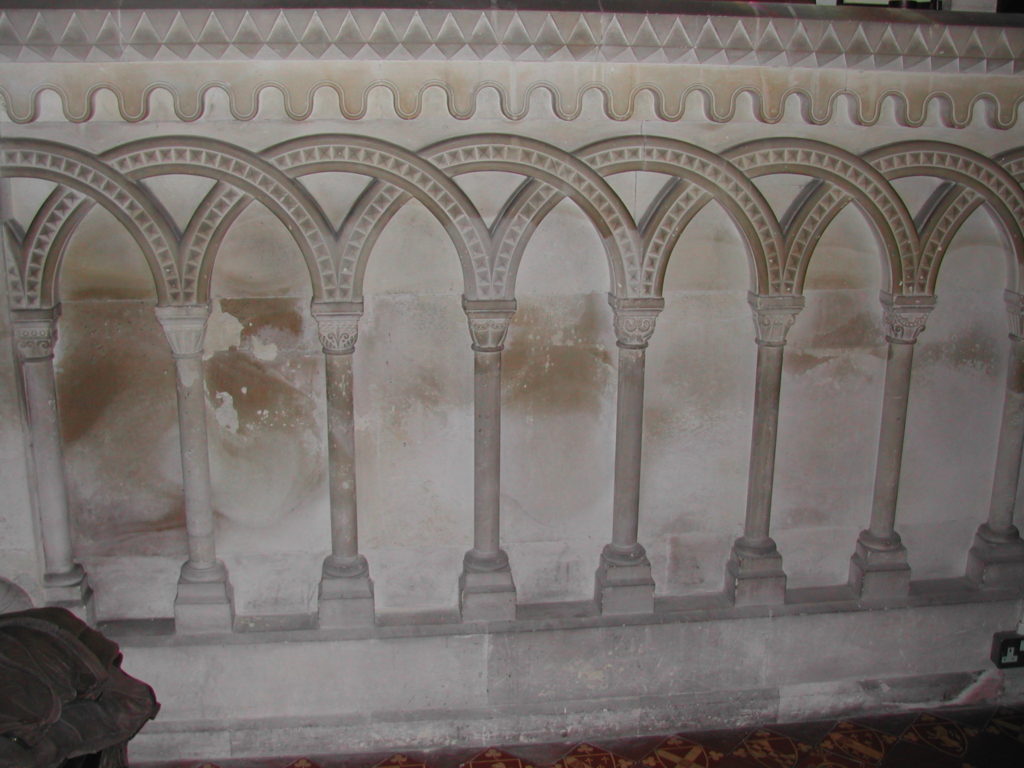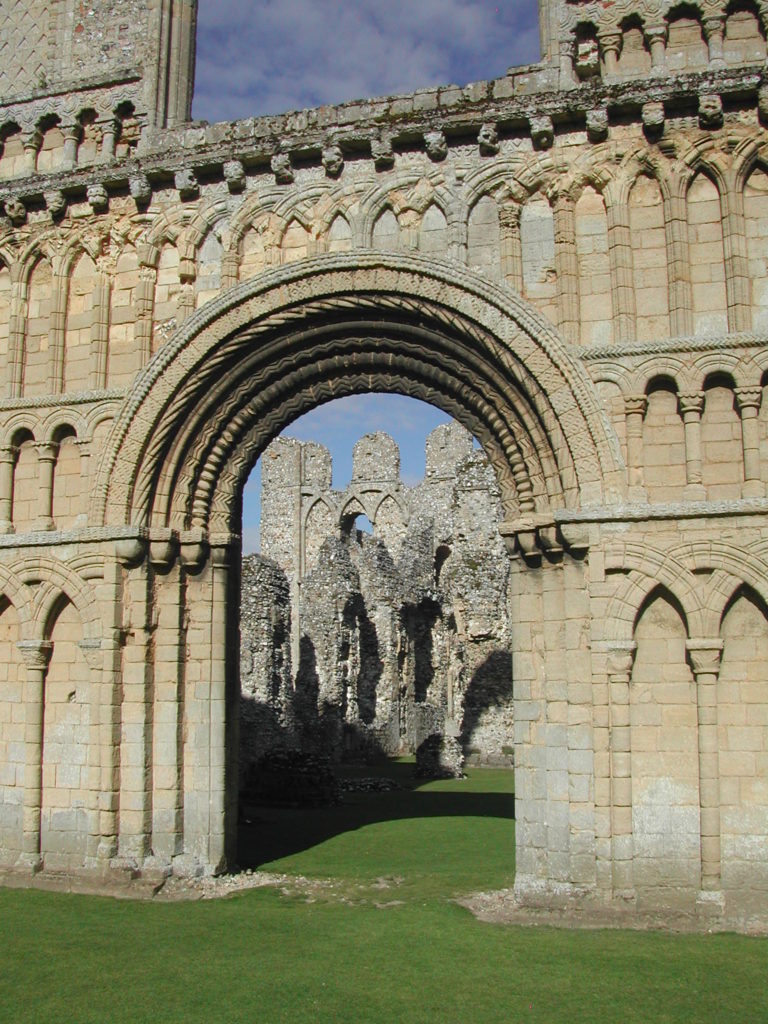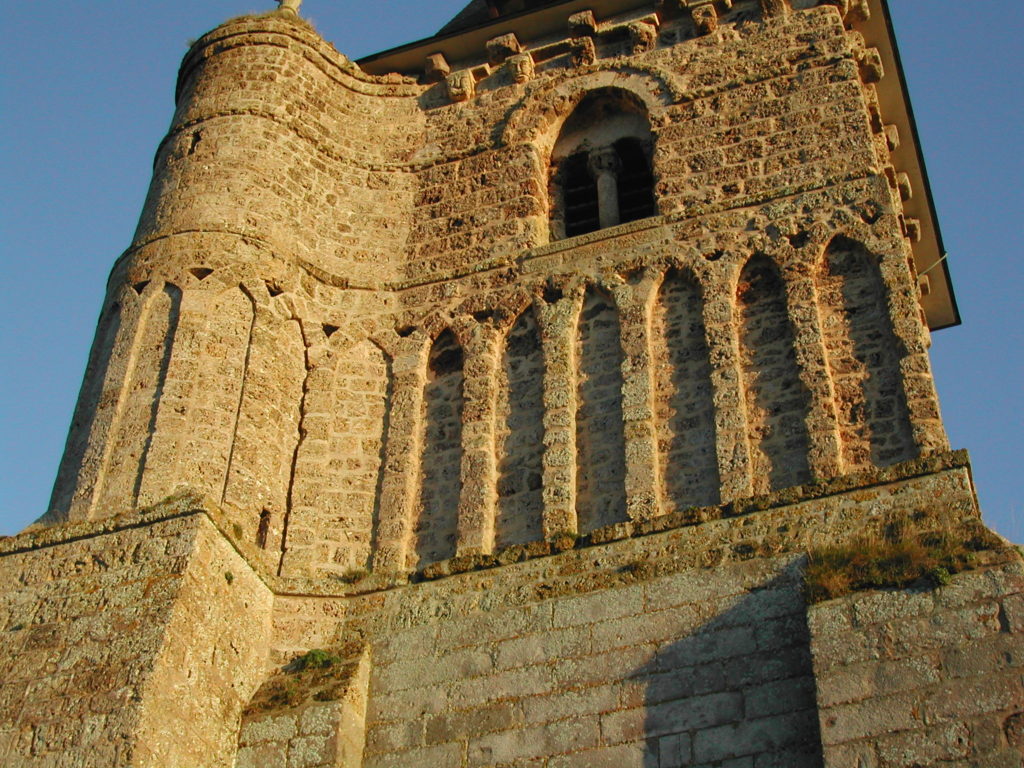In the funeral chapel of William de Warenne and his wife Gundrada, in Southover Church at Lewes in southern England, one notes the presence of a typical element of anglo-norman architecture represented by a series of interwoven arches. These are represented at the level of the iron entry grill to the chapel, but also at the level of the walls which only date from the XIXth C..

This motif (often forming a blind arcade) is frequently found in XIth and XIIth century England, probably decoracted certain walls of the Saint-Pancras priory founded by William and Gundrada unfortunately destroyed during the reign of Henry VIII, no traces of which remain. However, they are conspicuously present in another priory founded by William and Gundrada – in Castle Acre – where they form an impressive and remarkably preserved element of the west façade of the church.

It is no surprise that we find similar architectural decoration in Normandy – not so much in Bellencombre the fief of Varenne, but in surrounding areas. It is enough to cast an eye over the Norman churches (Norman architecture is referred to in France as Roman architecture) around Dieppe on the coast – such as : Avremesnil, Blosseville-sur-Mer, Sainte-Marguerite-sur-Mer and at Vatierville..



This architectural motif has been used all over Normandy, but to a lesser degree than in England where after reaching its peak it spread to Scotland and Wales…
Norman architecture is referred to in France as Roma, architecture.
Sources :
Gaudefroy Ghislain. D’où venaient ces chevaliers normands qui ont émigré en Italie méridionale aux XIe et XIIe siècles ? Connaissance de Dieppe et de sa région, Editions Bertout, Luneray, n°71, octobre 1990, pp. 7-14.
Gaudefroy Ghislain. Le comté d’Eu au fil du temps. Editions Page de Garde, Elbeuf, 2003, 332 p.
Gaudefroy Lionel. L’art roman normand en Pays de Bray. La Boutonnière de Bray, Editions de la Société d’Histoire du Pays de Bray normand et picard, S.H.P.B., Gournay-en-Bray, tome 2, 2012, pp. 46-55.
Conférence : Le samedi 19 septembre 2020 en l’église de Fontenay-Torcy (Oise), Lionel Gaudefroy a fait une conférence sur L’art roman normand et plus particulièrement sur le motif d’arcs sécants en Normandie et dans les conquêtes normandes (Grande Bretagne, Italie du Sud et Sicile…).
